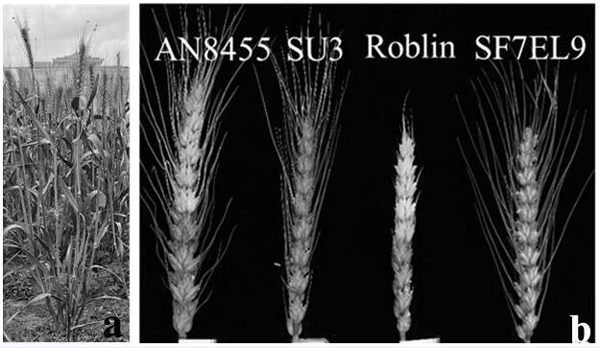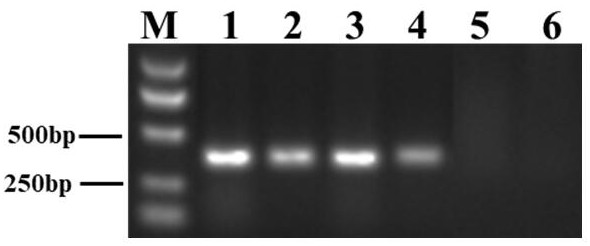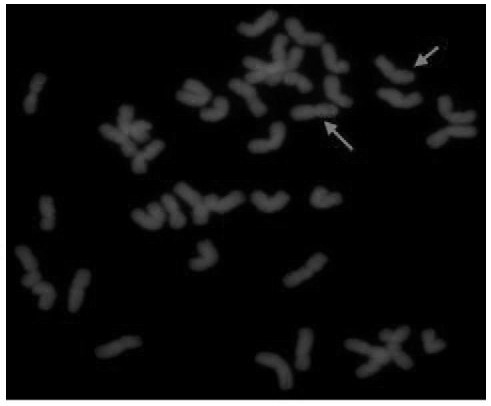Breeding method for improving wheat scab resistance by using scab-resistant germplasm SF7EL9
A technology for wheat scab and scab, which is applied in the fields of plant genetic improvement, botanical equipment and methods, and applications, can solve the problems of unremarkable agronomic traits and have not been directly applied, and improve the resistance to scab. , the effect of genetic stability
- Summary
- Abstract
- Description
- Claims
- Application Information
AI Technical Summary
Problems solved by technology
Method used
Image
Examples
Embodiment 1
[0032] In order to understand the effect of the small fragment translocation line SF7EL9 on resistance to head blight and to clarify its utilization value, SF7EL9 was used as the male parent and the susceptible variety Annong 8455 was used as the female parent, and then Annong 8455 was used as the female parent to backcross for one generation. Selfing, identified by molecular marker Th7EL-46 and genomic fluorescence in situ hybridization (GISH) ( Figure 4 ) to obtain improved germplasm. After years of scab resistance identification, it was found that the obtained new germplasm was highly resistant to scab ( Figure 5 ).
Embodiment 2
[0034] SF7EL9 was used as one of the parents (male or female) to cross with the high-yield variety Yangmai 23. First, SF7EL9 was crossed with Yangmai 23, F 1 Daizai backcrossed Yangmai 23 and got BC 1 f 1 Seed, single plant BC 1 f 1 , using the molecular marker Th7EL-46 to select at the seedling stage, keeping plants containing the Th7EL-46 marker and harvesting individually to obtain BC 1 f 2 Seeds; planted in individual plants BC 1 f 2 , 6 rows per plant, 5 plants per row, each individual plant was selected using molecular markers and GISH, and the individual plants containing Th7EL-46 marker plants and E. elongatum chromosomes were kept, and at the flowering stage, single plants were used Identification of scab resistance by flower infusion method, harvesting plants with good scab resistance from a single plant to obtain BC 1 f 3 Seeds; planted in individual plants BC 1 f 3 , 6 rows per plant, 5 plants per row, each individual plant was selected using molecular m...
PUM
 Login to View More
Login to View More Abstract
Description
Claims
Application Information
 Login to View More
Login to View More - R&D
- Intellectual Property
- Life Sciences
- Materials
- Tech Scout
- Unparalleled Data Quality
- Higher Quality Content
- 60% Fewer Hallucinations
Browse by: Latest US Patents, China's latest patents, Technical Efficacy Thesaurus, Application Domain, Technology Topic, Popular Technical Reports.
© 2025 PatSnap. All rights reserved.Legal|Privacy policy|Modern Slavery Act Transparency Statement|Sitemap|About US| Contact US: help@patsnap.com



